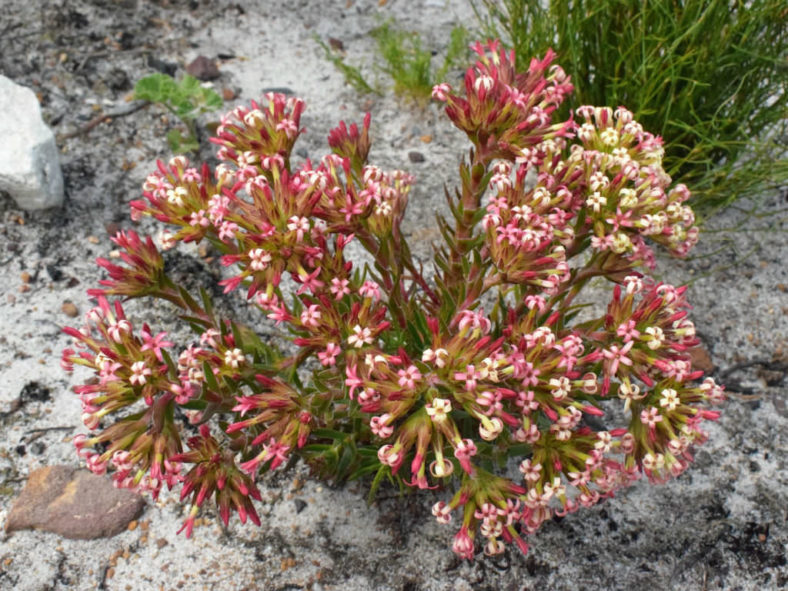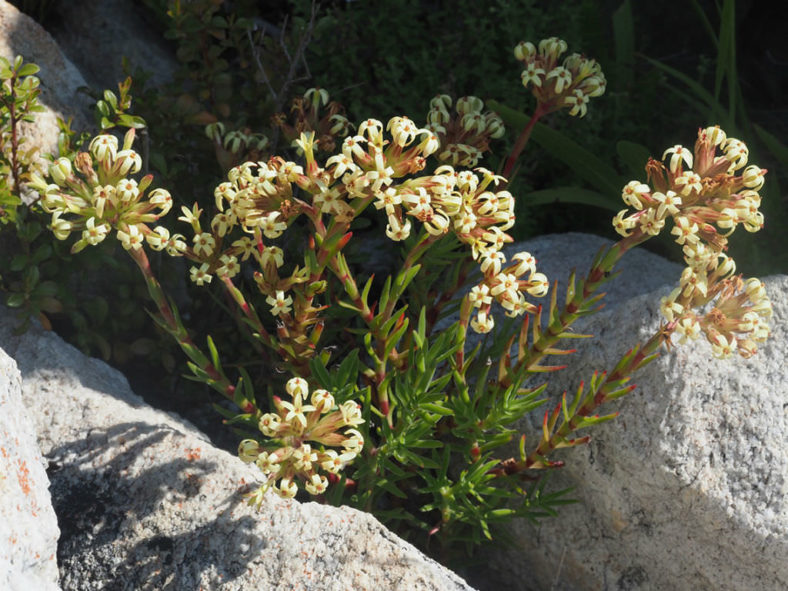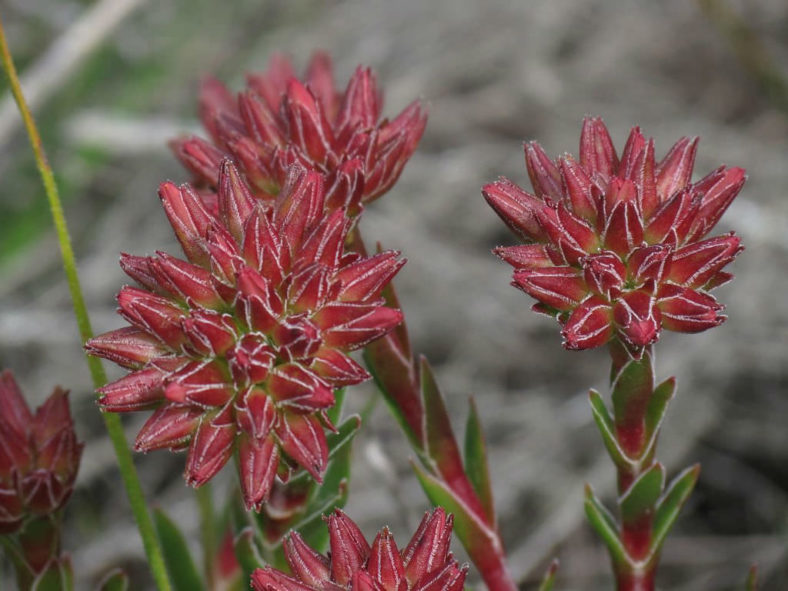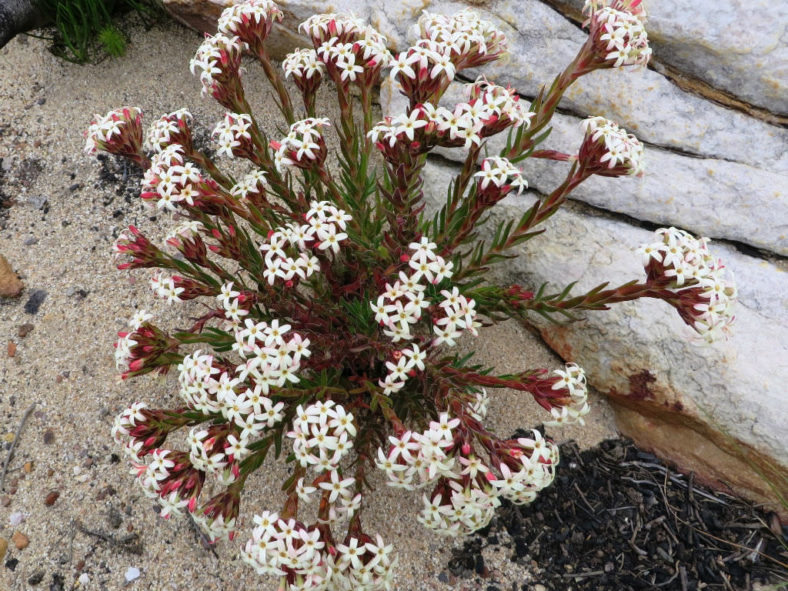Scientific Name
Crassula fascicularis Lam.
Common Name(s)
Fragrant Crassula, Sweet-scented Crassula
Synonym(s)
Kalosanthes fascicularis, Larochea fascicularis, Rochea fascicularis
Scientific Classification
Family: Crassulaceae
Subfamily: Crassuloideae
Genus: Crassula
Origin
Crassula fascicularis is native to South Africa (Western Cape).
Description
Crassula fascicularis is an erect, sparingly branched succulent shrublet that can grow up to 16 inches (40 cm) tall. The branches are frequently reddish and can reach up to 0.15 inches (0.4 cm) in diameter. The leaves are green, lance-shaped with a channeled upper surface, and can measure up to 1.6 inches (4 cm) long. They usually have tiny, curved hairs along the margins.
During spring and early summer, Crassula fascicularis produces attractive clusters of strongly sweet-scented, white to yellowish-cream flowers with lobes curled back and often flushed with reddish pink. The tubular flowers can grow up to 1.2 inches (3 cm) long.

Hardiness
USDA hardiness zones 9b to 11b: from 25 °F (−3.9 °C) to 50 °F (+10 °C).
How to Grow and Care
Crassulas are easy to grow but susceptible to mealybugs and fungal diseases. As with all succulents, overwatering is sure to be fatal, so err on the side of being too dry rather than too wet. Never let your plant sit in water. If you water from beneath by allowing the plant to sit in a saucer, pour off any excess water after a few minutes.
These succulents are generally started by division, offsets, or leaf cuttings. Crassulas can be easily propagated from a single leaf. Sprout leaves by placing them into a potting mix for succulents, then cover the dish until they sprout.
Repot as needed, preferably during the warm season. To repot your Crassula, ensure the soil is dry before repotting, then gently remove the pot. Knock away the old soil from the roots, removing any rotted or dead roots. Treat any cuts with a fungicide. Place the plant in its new pot and backfill it with potting soil, spreading the roots as you repot. Leave the plant dry for a week or so, then begin to water lightly to reduce the risk of root rot.
Learn more at How to Grow and Care for Crassula.
Links
- Back to genus Crassula
- Succupedia: Browse succulents by Scientific Name, Common Name, Genus, Family, USDA Hardiness Zone, Origin, or cacti by Genus
Photo Gallery
Click on a photo to see a larger version.


